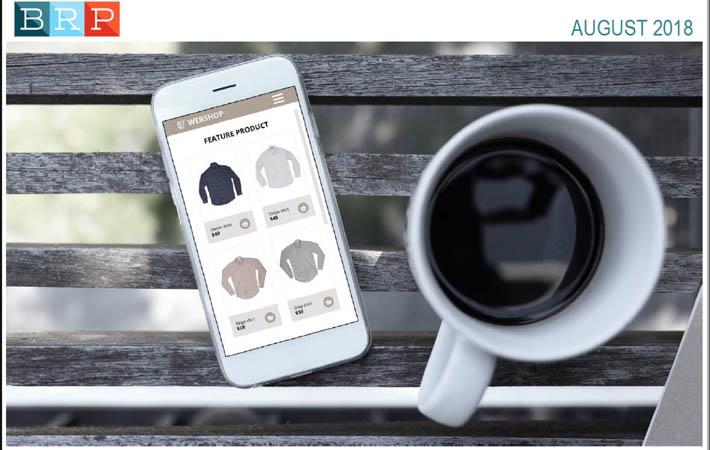Interviews
Less than 50% retailers measure customer loyalty: BRP
21 Oct '18
3 min read

Courtesy: BRP
Most e-retailers have key performance indicators (KPIs) for sales, average order value, comparative sales and conversion rates. However, less than 50 per cent of them measure customer loyalty through customer satisfaction, customer retention and post-purchase customer survey results, as per early results from BRP’s 2018 Digital Commerce Survey.
Customers’ most recent experience with a company impacts the feelings they share with friends and family and the relationship they have with the brand. The satisfaction level during the post-purchase experience has a direct correlation on a customer’s decision to buy again, or not. Retailers that meet or exceed post-purchase customer experience expectations create a unique brand experience that customers will ‘share’ with others personally and on social media. Exceptional post-purchase customer experiences inspire customers to build long-term relationship with brands, says the ‘Best Practices for the Post-Purchase Experience’ report by retail management consulting firm, BRP.
Studies have shown that a returning customer is less expensive to convert and has a higher average order value than a new customer. Yet, many retailers are focused on utilising total sales and comp sales to measure company performance instead of measuring customer loyalty and retention.
After a customer clicks ‘buy’, they enter a phase of uncertainty, where they are unsure whether their product will arrive on time or whether it will appear in one piece. Retailers who communicate regular updates and reassurances on the order and delivery status to customers can turn this period into a powerful moment of trust for the brand. Customers who shop without a sense of risk will feel more comfortable making repeat purchases in the future. This breeds customer loyalty, said BRP.
“Retailers are focusing more attention on customer acquisition than loyalty. While acquiring new customers and driving top-line sales are important, building long-term relationships with customers is imperative for healthy long-term performance,” said Jeffrey Neville, senior vice president and practice lead at BRP. “Paying more attention to the post-purchase experience and measuring its impact on sales, will increase the lifetime value of customers and maximize total revenues and profits.”
“What retailers should really be focused on is RFM (recency of a purchase, frequency of the purchase and the monetary value of the purchase),” said Ken Morris, principal at BRP. “For many years this has been the mantra for successful omnichannel retailers, but it appears that the new economy has different metrics. Maybe we need to go back to the future.” (KD)
Customers’ most recent experience with a company impacts the feelings they share with friends and family and the relationship they have with the brand. The satisfaction level during the post-purchase experience has a direct correlation on a customer’s decision to buy again, or not. Retailers that meet or exceed post-purchase customer experience expectations create a unique brand experience that customers will ‘share’ with others personally and on social media. Exceptional post-purchase customer experiences inspire customers to build long-term relationship with brands, says the ‘Best Practices for the Post-Purchase Experience’ report by retail management consulting firm, BRP.
Studies have shown that a returning customer is less expensive to convert and has a higher average order value than a new customer. Yet, many retailers are focused on utilising total sales and comp sales to measure company performance instead of measuring customer loyalty and retention.
After a customer clicks ‘buy’, they enter a phase of uncertainty, where they are unsure whether their product will arrive on time or whether it will appear in one piece. Retailers who communicate regular updates and reassurances on the order and delivery status to customers can turn this period into a powerful moment of trust for the brand. Customers who shop without a sense of risk will feel more comfortable making repeat purchases in the future. This breeds customer loyalty, said BRP.
“Retailers are focusing more attention on customer acquisition than loyalty. While acquiring new customers and driving top-line sales are important, building long-term relationships with customers is imperative for healthy long-term performance,” said Jeffrey Neville, senior vice president and practice lead at BRP. “Paying more attention to the post-purchase experience and measuring its impact on sales, will increase the lifetime value of customers and maximize total revenues and profits.”
“What retailers should really be focused on is RFM (recency of a purchase, frequency of the purchase and the monetary value of the purchase),” said Ken Morris, principal at BRP. “For many years this has been the mantra for successful omnichannel retailers, but it appears that the new economy has different metrics. Maybe we need to go back to the future.” (KD)
Fibre2Fashion News Desk – India
Popular News
Leave your Comments
Editor’s Pick
































-Ltd..jpg?tr=w-120,h-60,c-at_max,cm-pad_resize,bg-ffffff)





.jpg?tr=w-120,h-60,c-at_max,cm-pad_resize,bg-ffffff)
.jpg?tr=w-120,h-60,c-at_max,cm-pad_resize,bg-ffffff)






